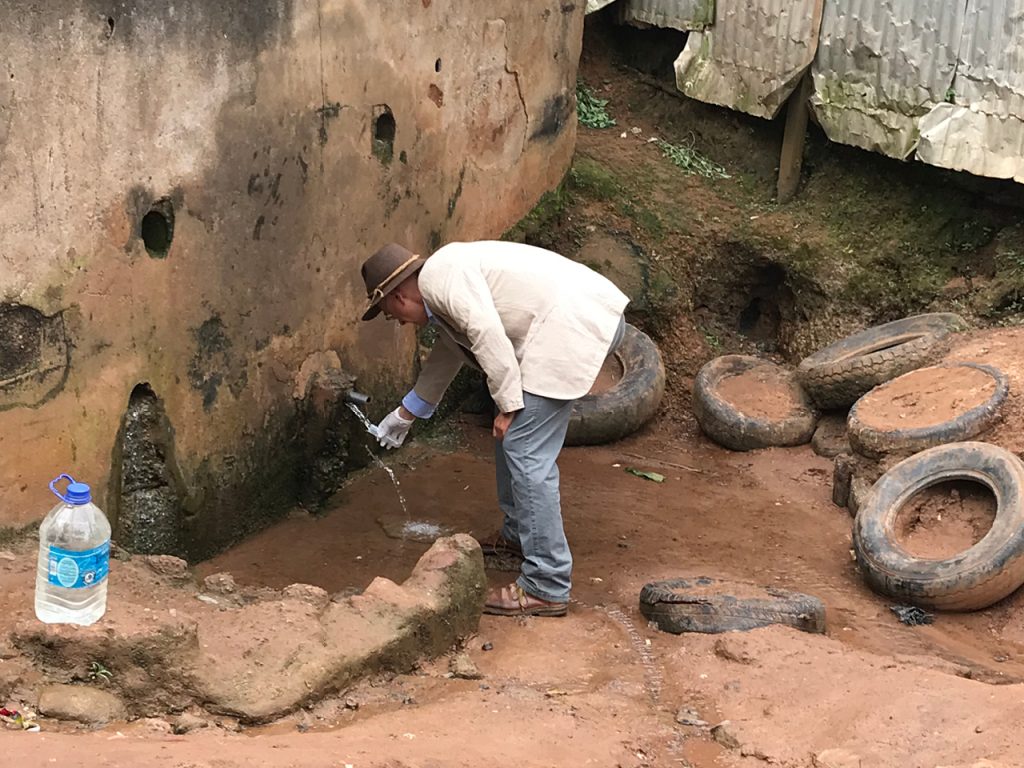
For the first time, IASU has analyzed a water sample from the drinking water intake in Soa. The sample was taken at the Health Center in Soa. This water has been extracted from a depth of approx. 30 m with a hand pump since 1993 and is used to supply the population with drinking water.
The sample was analyzed widely for organic and inorganic parameters. The analysis of volatile components showed traces of carbon disulfide, chloroform and benzene, which can be classified as harmless in these low concentrations. The analysis of low-volatile organic components showed elevated levels of phthalic acid ester, hexanedicarboxylic acid ester and alkylated hexenes, as well as traces of the polycyclic hydrocarbons naphthalene, acenaphthylene, phenanthrene, anthracene, fluoranthene and pyrene. These compounds may have originated from the sample vessel (plastic bottle) itself, but may also have entered the well water through leaching of plastic waste from wild landfills.
The analysis of the inorganic components included the parameters aluminum, arsenic, boron, barium, beryllium, calcium, cadmium, cobalt, chromium, copper, iron, mercury, potassium, magnesium, manganese, molybdenum, sodium, nickel, phosphorus, lead, rubidium, antimony, selenium, tin, strontium, tellurium, thallium, uranium, vanadium, zinc. Here only mercury showed a slightly elevated but not alarming value. The influence of wild landfills could be a possible source.
The sample was analyzed widely for organic and inorganic parameters. The analysis of volatile components showed traces of carbon disulfide, chloroform and benzene, which can be classified as harmless in these low concentrations. The analysis of low-volatile organic components showed elevated levels of phthalic acid ester, hexanedicarboxylic acid ester and alkylated hexenes, as well as traces of the polycyclic hydrocarbons naphthalene, acenaphthylene, phenanthrene, anthracene, fluoranthene and pyrene. These compounds may have originated from the sample vessel (plastic bottle) itself, but may also have entered the well water through leaching of plastic waste from wild landfills.
The analysis of the inorganic components included the parameters aluminum, arsenic, boron, barium, beryllium, calcium, cadmium, cobalt, chromium, copper, iron, mercury, potassium, magnesium, manganese, molybdenum, sodium, nickel, phosphorus, lead, rubidium, antimony, selenium, tin, strontium, tellurium, thallium, uranium, vanadium, zinc. Here only mercury showed a slightly elevated but not alarming value. The influence of wild landfills could be a possible source.
